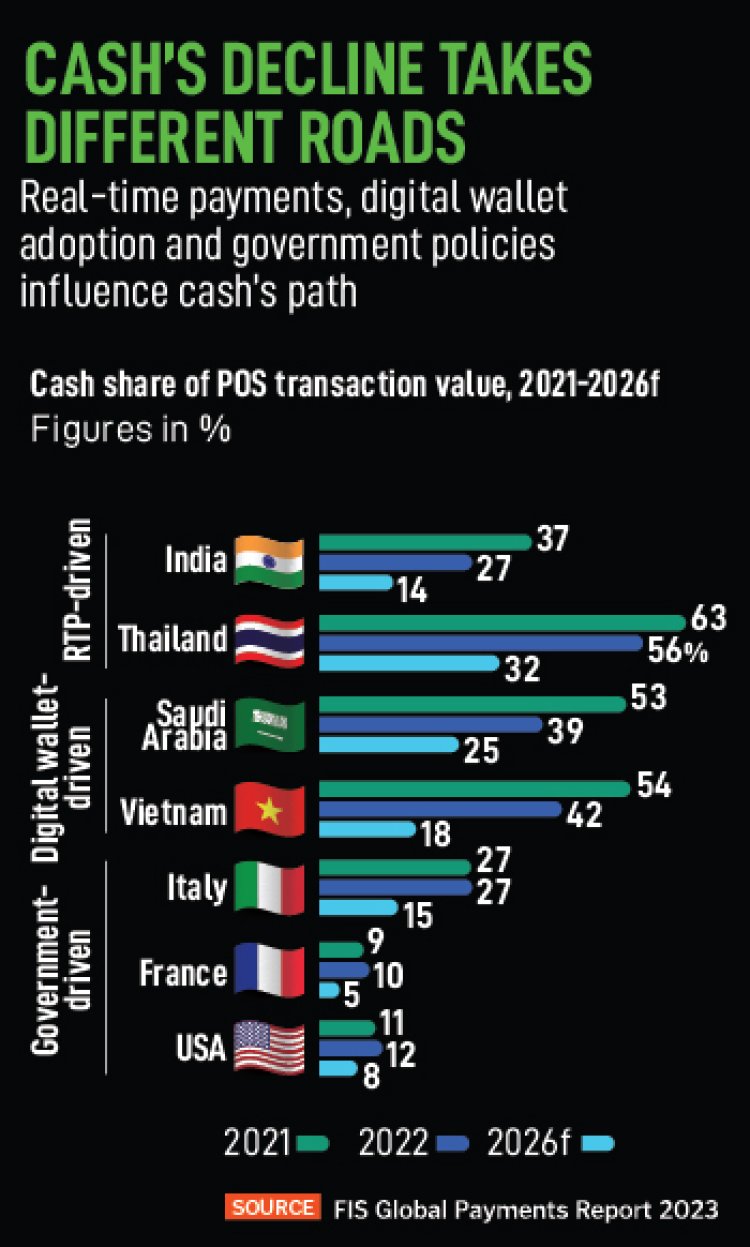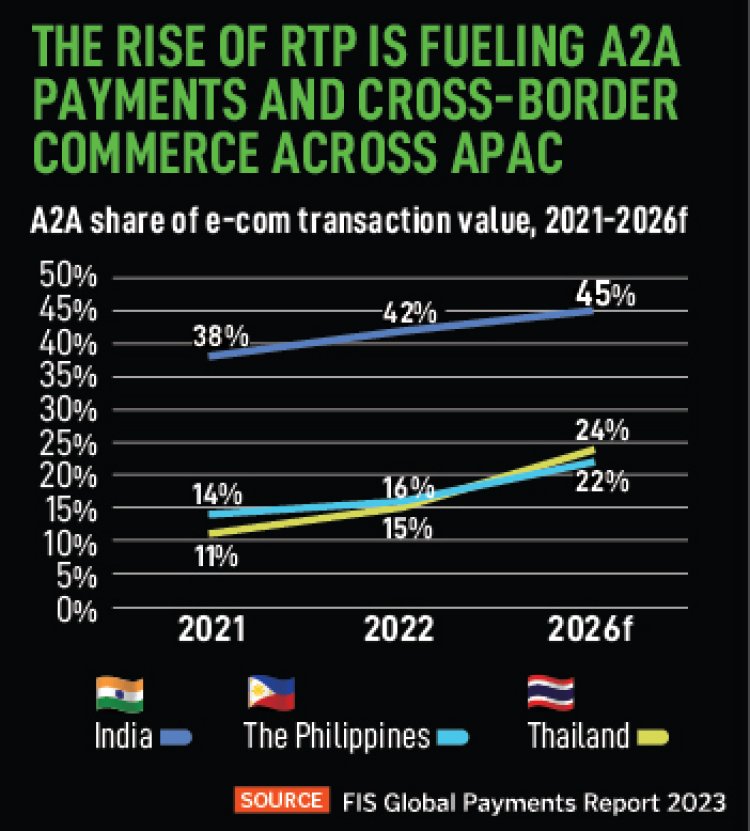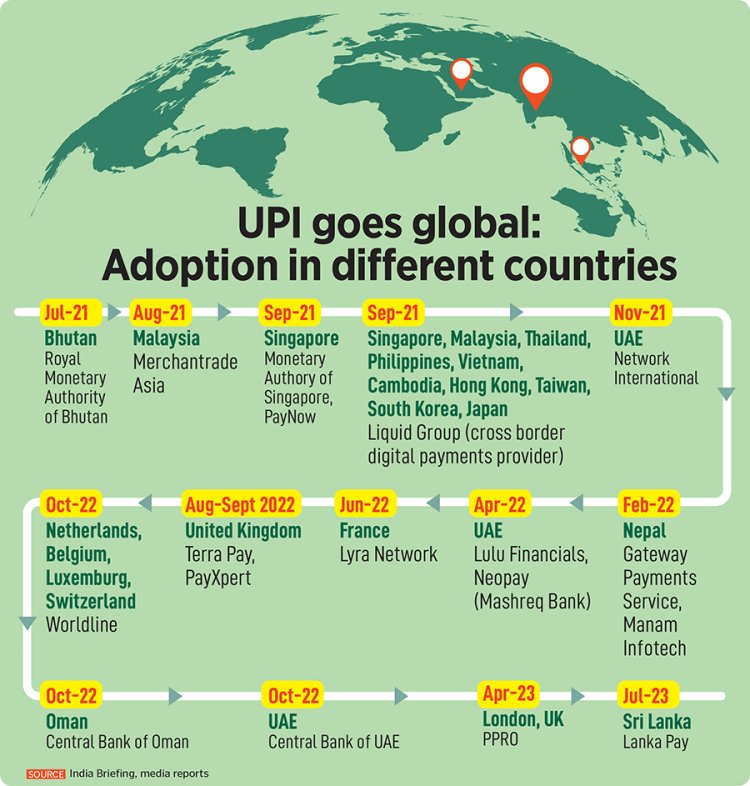An Indian tourist in Singapore can now pay for a cup of coffee or even a television using UPI. The National Payments Corporation of India (NPCI) International has partnered with PayNow in Singapore, and money transfers on the PayNow Virtual Payment Address (VPA) will function similarly to domestic transfers on UPI. A traveller would only need to scan the QR code, input his or her PIN, and have the money deducted from their bank account via their app.
The decision to accept payments in Singapore and other countries such as Bhutan and Nepal is significant not only because of their economic ties to India, but also because UPI is increasingly viewed as a peer-to-peer, global payment network. (It still has a long way to go before it gets there though). Global payment networks can be categorised into three groups. There are Visa and Mastercard, which are accepted globally but are most prevalent in North America and Europe, as well as the China-based closed loop networks Alipay and WeChat Pay. Also UPI.
“Before the pandemic, we were tasked with evaluating the progress China had made in the payments industry. This is no longer the case, as UPI is now mentioned in its own right, according to HDFC Bank’s country director of payments, Parag Rao.
Since its introduction in April 2016, UPI has become India’s primary payment method. The Reserve Bank of India’s prediction in its June 2023 bulletin, based on PwC data, that the Unified Payments Interface (UPI) will account for 90 percent of retail digital transaction volume over the next five years, up from 75.6 percent in FY23, is evidence of the system’s dominance.
UPI’s volume increased by 59.2% year-over-year to Rs 9.33 billion in June 2023, while its value increased by 45.5% to Rs 14,75,464 crore. This has only increased to Rs 9.96 billion in terms of volume and Rs 15,33,536.44 crores in terms of value for the month of July.
In a press conference held on August 10 following the announcement of the monetary policy, the governor of the Reserve Bank of India (RBI), Shaktikanta Das, stated that the internationalisation of the Unified Payments Interface (UPI) is currently under development.
In India, UPI use cases are expanding. RuPay (an Indian multinational payments system) and UPI have been implemented through payment solutions outside of India. There have been discussions regarding linking domestic credit cards to UPI and enabling credit for Indian consumers via UPI. On the acceptance front, merchants prefer UPI because QR codes are inexpensive to deploy compared to point-of-sale (POS) devices, the costs of which are ultimately passed on to the merchant, and the absence of a merchant discount rate.
On the international front, however, NPCI International has its work cut out for it. It is working on a long-term strategy to promote the visibility and accessibility of the payment network. It already has numerous advantages. There are developing economies where currency is widely used. In contrast, the deployment of POS devices is costly. India offers a low-cost alternative that is readily scalable. With this objective in mind, NPCI decided to internationalise UPI.
How UPI’s global transactions work
The NPCI has taken a two-pronged strategy to establishing UPI in other countries. “There are two main objectives when we travel outside of [India]. Ritesh Shukla, CEO of NPCI overseas, explains, “One is building interoperability with India, and that means two things: creating opportunities for travellers from India when they visit international markets, and giving them the option to scan their UPI apps and make UPI payments.”
Helping other countries establish ecosystems analogous to UPI is the second phase (step two), which is more long-term in nature. To this end, we prefer to collaborate with central banks or central bank-authorized businesses, says Shukla, and develop a relevant proposition that incorporates both technological and business expertise.

This is how an international UPI payment operates. In Singapore, there would be an acquiring bank. The money would be transferred through an internal transfer system, such as PayNow. According to HDFC Bank’s Rao, the system would be built to communicate with the Indian system UPI, and from there it would travel over the UPI network to the customer’s Indian bank account. The order of events would be inverted during settlement.
The second application is for the 30 million members of the Indian diaspora living in the Middle East, Southeast Asia, and North America to remit financial support to their home country. This would again take advantage of the local network in that country with which UPI has partnered with the Indian UPI network to remit money cheaply. Foreign workers sent $89 billion to India in 2021-22, representing a sizable economic opportunity.
Long-term, NPCI International will work to assist other nations in developing UPI-style ecosystems. According to Shukla, “and our model is that we prefer working with central banks or central bank-authorised entities in order to create a relevant proposition that not only has technology but also business know-how.”
In this respect, UPI has the potential to significantly contribute to the worldwide success of the payments network. Experts in the financial technology industry have speculated that UPI will prove more practical for low-value, low-ticket transactions. “One can look at the scan and pay use cases in SE Asia and Chinese wallet applications like Alipay and WeChat Pay,” says Harish Prasad, head of banking at fintech firm FIS Group. Scan-and-pay has experienced huge success in Singapore. “As long as the transaction is secure and there is recourse in payment, people are used to using scan and pay,” he said.
Problems with Scaling Up
NPCI International has signed agreements with many countries, including Nepal, Bhutan, Singapore, the United Arab Emirates, France, and Oman, but there is no information available about the volume of transactions that have occurred as a result, such as money being sent back to India or Indians scanning QR codes for local payments while abroad.

Shukla suggests that once a certain threshold is crossed, the volume of such transactions could explode in a “hockey-stick” fashion. Nonetheless, the unwillingness to disclose such data suggests that UPI usage outside of India still has some distance to travel.
Prashanth Aditya Susrala went to Dubai for work in the month of July. This occurred not long after the United Arab Emirates (UAE) Instant Payment Platform announced its compatibility with UPIs. The airport he arrived at and the stores he went to gave no indication that such a service existed. Since there is a sizable Indian community in Dubai, he thinks that adoption would have been rapid in light of this information. This is something that NPCI International’s Shukla has acknowledged, and he promises a significant increase in advertising over the coming six months. Previous attempts at implementing UPI by Susrala in Nepal were similarly unsuccessful. “The QR infrastructure outside India is not well developed, and while in India it is interoperable, that is not the scenario in some of the countries outside India,” says Rahul Jain, CFO of NTT Data Payment Services India.
The process of acceptance in India likewise took a while, from 2016 to 2019. The widespread adoption of digital payment methods is unlikely to diminish. There are other indications (see figure) that cash usage in the Indian economy is declining.

According to a report published by PwC in May 2023, the volume of digital payments in India is projected to reach 411 billion by FY27, up from 103 billion in FY23, thanks to the industry’s steady growth over the past five years at a CAGR of 50 percent.
Another problem is that Indians living overseas may favour using UPI for smaller purchases like restaurant meals and tour tickets, but may continue to use credit cards for larger purchases. There is no denying the practicality of using a credit card when making a large purchase, as pointed out by Raj Khosla, the creator of MyMoneyMantra. “This is true even in India as people like to utilise free credit for 45 days,” he says.
Finally, there’s the problem of the merchant discount percentage. How will foreign businesses that accept credit cards be taxed? NPCI International is upfront about the fact that there will be a price outside of India. The final amount of that fee is still up in the air. It must be low enough that shops discourage people from using credit cards but high enough that banks see a commercial benefit from accepting cash. Pricing and promotion would determine the product’s ultimate success or failure. Both of those plot points are currently developing.
Also Read : What is a 2-Bar Reversal Pattern





